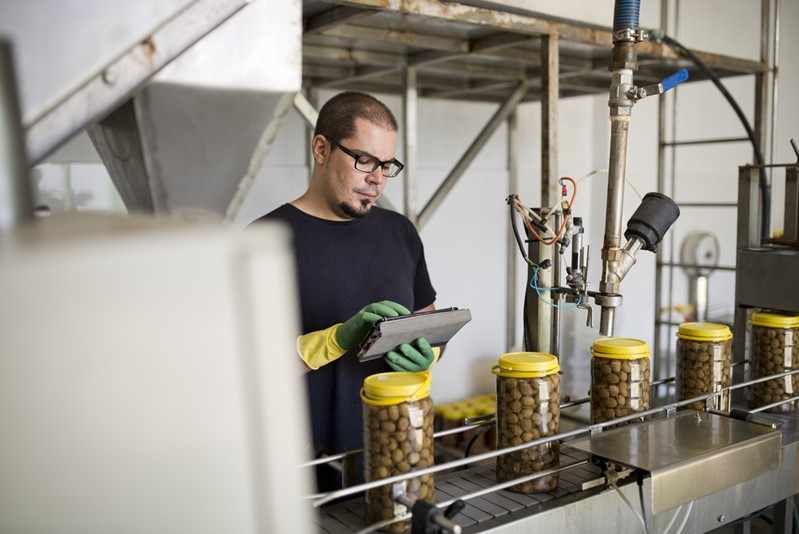-
Subscribe to Blog:
SEARCH THE BLOG
CATEGORIES
- Aerospace
- Asset Maintenance
- Automotive
- Blog
- Building Products
- Case Studies
- Chemical Processing
- Consulting
- Food & Beverage
- Forestry Products
- Hospitals & Healthcare
- Knowledge Transfer
- Lean Manufacturing
- Life Sciences
- Logistics
- Manufacturing
- Material Utilization
- Metals
- Mining
- News
- Office Politics
- Oil & Gas
- Plastics
- Private Equity
- Process Improvement
- Project Management
- Spend Management
- Supply Chain
- Uncategorized
- Utilities
- Whitepapers
BLOG ARCHIVES
- June 2025 (4)
- May 2025 (1)
- April 2025 (1)
- March 2025 (1)
- February 2025 (4)
- January 2025 (4)
- December 2024 (4)
- November 2024 (2)
- October 2024 (6)
- September 2024 (5)
- August 2024 (5)
- July 2024 (6)
- June 2024 (3)
- May 2024 (3)
- April 2024 (4)
- March 2024 (3)
- February 2024 (4)
- January 2024 (5)
- December 2023 (2)
- November 2023 (1)
- October 2023 (6)
- September 2023 (3)
- August 2023 (4)
- July 2023 (2)
- June 2023 (3)
- May 2023 (7)
- April 2023 (3)
- March 2023 (3)
- February 2023 (5)
- January 2023 (6)
- December 2022 (2)
- November 2022 (5)
- October 2022 (5)
- September 2022 (5)
- August 2022 (6)
- July 2022 (3)
- June 2022 (4)
- May 2022 (5)
- April 2022 (3)
- March 2022 (5)
- February 2022 (4)
- January 2022 (7)
- December 2021 (3)
- November 2021 (5)
- October 2021 (3)
- September 2021 (2)
- August 2021 (6)
- July 2021 (2)
- June 2021 (10)
- May 2021 (4)
- April 2021 (5)
- March 2021 (5)
- February 2021 (3)
- January 2021 (4)
- December 2020 (3)
- November 2020 (3)
- October 2020 (3)
- September 2020 (3)
- August 2020 (4)
- July 2020 (3)
- June 2020 (5)
- May 2020 (3)
- April 2020 (3)
- March 2020 (4)
- February 2020 (4)
- January 2020 (4)
- December 2019 (3)
- November 2019 (2)
- October 2019 (4)
- September 2019 (2)
- August 2019 (4)
- July 2019 (3)
- June 2019 (4)
- May 2019 (2)
- April 2019 (4)
- March 2019 (4)
- February 2019 (5)
- January 2019 (5)
- December 2018 (2)
- November 2018 (2)
- October 2018 (5)
- September 2018 (4)
- August 2018 (3)
- July 2018 (2)
- June 2018 (4)
- May 2018 (3)
- April 2018 (3)
- March 2018 (2)
- February 2018 (2)
- January 2018 (1)
- December 2017 (1)
- November 2017 (2)
- October 2017 (2)
- September 2017 (1)
- August 2017 (2)
- July 2017 (2)
- June 2017 (1)
- April 2017 (3)
- March 2017 (3)
- February 2017 (2)
- January 2017 (2)
- December 2016 (2)
- November 2016 (4)
- October 2016 (4)
- September 2016 (3)
- August 2016 (6)
- July 2016 (4)
- June 2016 (4)
- May 2016 (1)
- April 2016 (3)
- March 2016 (4)
- February 2016 (2)
- January 2016 (4)
- December 2015 (3)
- November 2015 (3)
- October 2015 (1)
- September 2015 (1)
- August 2015 (4)
- July 2015 (6)
- June 2015 (4)
- May 2015 (7)
- April 2015 (6)
- March 2015 (6)
- February 2015 (4)
- January 2015 (3)
CONNECT WITH US
Tag Archives: Labor Requirements
Food and beverage companies need to meet customer expectations and optimize operational processes to succeed in a new market. However, not every business has the means to contend in this new environment, nor the internal processes to counter evolving consumer tastes. Still, there are strategies organizations in the industry can implement to help keep them modern and marketable.
For more insight on how trends in the food and beverage industry impact manufacturers today, download our e-book, Trouble at the Table.
It’s easy to forget that, connected though they may be, building materials and construction are two distinct industries.
That said, they almost always experience similar economic challenges or act as augurs to one another’s success or failure. While one might think building materials would inform construction more often than the other way around – changes to a product, after all, could greatly alter how a user uses it – in many ways the reverse is just as true.
What current construction trends will impact how building materials manufacturing performs this year?
U.S. economy stabilizes and takes off in 2017
Simply put, if people are building, the building materials industry can expect good sales numbers.
According to the American Institute of Architects, construction will soon overcome the stagnancy it struggled against at the tail end of 2015 and throughout 2016. This year, spending on construction is projected to grow by 6 percent, with a majority of investment coming from the public sector (government and residential). In theory, this comports with current events in Washington, D.C. The Hill reported the Trump administration plans to wheel out a “massive rebuilding package” in the president-elect’s first 100 days in office.
The AIA stipulates, however, these increases depend entirely on good performances from volatile variables such as moderate job growth, continued housing market recovery, and both national and international confidence in American manufacturing. Estimates from Metrostudy show about three new construction jobs were created for every house built in 2016, so the success of building materials as fed by construction may be somewhat self-sustaining as far as the job market is concerned. After all, with larger construction workforces, contracting teams can take on more projects and require more supplies to do so.
Housing too should see a good year in 2017, with many economists predicting more than 6 million existing home sales, according to Gord Collins, as well as the creation of 160,000 new homes. The latter figure should carry on annually to 2024. That’s huge for construction and building materials – as Value Line noted, residential housing represents about 60 percent of all domestic construction spending.

Can construction take its services online? And can building materials manufacturing keep up?
Tech disruption may push construction out of pace with manufacturing
Widespread, cross-industry innovation and tech adoption throughout the private sector have only highlighted how little and how infrequently building materials and construction upgrade. Perhaps the resistance to change has something to do with the timelessness of these trades.
Nevertheless, the numbers don’t lie: In its 2016 industry digitization index, McKinsey rated construction the penultimate least digitized industry, one step ahead of “agriculture and hunting.” As the U.S. government plans to repair its crumbling infrastructure to boost the GDP, construction will have to rise to the challenge and implement new, tech-savvy methods for managing large-scale projects.
In turn, the building materials industry should ready itself for a big change. It is, after all, generally easier to upgrade the service sector than it is to upgrade means of production. Distribution too will factor heavily into the interplay between construction and building materials. As more contractors use the internet and apps to price shop, manufacturers must be ready to balance traditional brick-and-mortar channels with omnichannel logistics, all while keeping consumers happy and their brand value high.
The U.S. food and beverage industry will have a lot to chew on in 2017, but some challenges may be harder to swallow than others.
Rise of the meal kit
For families everywhere, the all-in-one complete meal in a box delivered to your doorstep seems too good to be true. And in a sense it is – according to a 2016 study from market researcher NDP Group, only 3 percent of adult consumers in the U.S. have actually tried meal kits. Granted, that’s still millions of people, not counting the millions more who will follow suit when big-name food companies join in on the venture. And they definitely will.
While many meal kit startups struggle to scale with a meteoric spike in demand over the last few years, their presence alone has irreversibly reshaped the food and beverage industry and revealed a value proposition for the F&B establishment. Another study performed by Fast Casual found millennials “are twice as likely as their older counterparts to have used a meal kit service within the last three months.” Meal kits have piqued the interest of the now largest generation of consumers. The industry will have to respond somehow. But is the meal kit phenomena more than a mouthful for F&B companies? Can their appetite for high profits be more than enough to digest this new market?
“Evolving operations to accommodate meal kits has already proven risky.”
Evolving operations to accommodate such a product and service has already proven risky. While big names in food and beverage may possess the capital to survive the disruption, this seemingly small shift in consumer demand actually affects the full length of the traditional supply chain, from sourcing ingredients all the way to end-user distribution. With so much in flux, the potential for profligate spending or exorbitant management costs are high.
Businesses that have subsisted for decades on legacy suppliers will have to forge new partnerships. Production teams may require new assets to prepare and package their own meal kits, or at the very least, contend with a slew of new machine changeovers in need of standardization and continuous optimization. Direct-to-consumer delivery will, in most cases, assuredly call for an expansion of current logistics network, reliance on a third party for that crucial last mile, recruitment, and job training. It is reasonable to expect the food and beverage industry to focus its attention on reducing costs for conventional operations while it works out the kinks in new processes. Only then can they rival popular meal kit startups and familiar competition also looking to adapt.
Fall of the sugary drink
In 2016, the World Health Organization released a study calling for a 20 percent tax hike on sugary drinks to significantly reduce consumption and thus prevent health conditions like obesity, diabetes, and tooth decay from corroding global health.

Sugary drink taxes will push beverage makers to think outside the bottle.
Even though opponents to the WHO’s recommendation cite lack of evidence that regulation will actually curtail consumption, cities in California and Colorado have instituted taxes, according to Food Business News. Sugary drink taxes have also come to vote several times over the years, albeit unsuccessfully, and F&B interests will no doubt challenge taxes as government overreach.
Nonetheless, beverage makers targeted by such taxes should prepare for the worst and hope for the best. Operational cost-cutting measures today could feasibly soften the blow from a steep drop in consumer demand and free up funds for innovating new products that appease the thirsty masses and their low-sugar standards. To start, beverage producers should map out their production lines and look for major areas of material waste. Use the milk industry as an example: Research from Design World Online revealed inefficient plant designs can lead to about 3 percent product losses daily. Business leaders should focus their attention on equipment cleaning operations and packaging, then continue on from there.
Like any other industry, metal manufacturing can benefit greatly from a reduction in operational expenses. Smarter, data-driven processes have the potential to eliminate waste in smelting and deliver sustainability at ore extraction sites even during troubled times. What lies ahead for metal producers the world over, and how might operational excellence help them rise to the occasion as their industry matures?
“2017 looks to be an upward-trending year for steel and iron ore prices, but only barely.”
Pricing forecasts show slow improvement
After the commodities boom peaked in 2011 and plummeted thereafter, any small gains to entrenched businesses are welcome. According to Knoema, 2017 looks to be an upward-trending year overall for steel and iron ore prices, but only barely. The projections also show a plateau throughout the rest of the decade, a sign that market value will not soon return to the twofold or even threefold per-tonne prices the metal industry enjoyed at the start of the 21st century.
With this in mind, businesses should feel comfortable instituting opex-cutting initiatives like predictive analysis for asset performance or standardized operating procedures for changeovers. After all, operationally efficient strategies will allow the companies that adopt them to become more responsive to not only their needs, but the needs of their customers, as their interests and expectations shift because of pricing. Operational excellence, therefore, makes room in the budget to build a better, more attractive product with a lower risk of financial turbulence.
Labor costs increase as ore grades decrease
Much of the metal industry’s costs upstream of smelters revolve around labor – around 40 to 50 percent in the mining sector, for example, according to a 2016 study from Deloitte. Industry leaders know the implausibility of simply pushing mining staff to extract more ore at a faster clip. Even though the depletion of high-grade ore deposits across the globe has led to the development of equipment potentially capable of cost-efficient low-grade ore extraction, the exchange has not been commensurate. The loss of high-grade ore opportunities currently trumps any gains reclaimed through innovation.

Operational excellence helps low-grade ore mining become more cost efficient.
With prices as low as they are in 2016 and mining companies squeezing what they can out of already overextended mines, something else has got to give. Metal producers need eyes on upstream operations and actionable intelligence to know how, where, and when to optimize effectively, particularly if they wish to avoid labor fallout from unobtainable operational demands from their workforces.
Economic improvement in other sectors pushes metal to produce under strain
As dim as the short-term outlook appears for many metal producers, long-term growth in areas like construction and automotive provide a silver lining. According to PricewaterhouseCoopers, construction output volumes around the world will increase 85 percent between now and 2030, with China, India, and the U.S. leading the charge. And while U.S. auto sales might stagnate over the next couple years, the incorporation of new gadgets into the average vehicle could prove to be a boon to rare metals used primarily in electronics. Moreover, project sales boosts in China signal even more innovation requiring a bounty of diverse materials.
As we mentioned earlier, operational excellence make businesses lighter on their feet and should not be seen exclusively as a method for tightening spend management. After all, the best defense is a good offense. So while metal producers incorporate new processes designed to navigate the disruptions affecting their sector, they shouldn’t lose sight of the opportunities for success on the horizon. To achieve them, however, these companies will need flexibility and agility, both of which they can gain through operational insight and optimization.
For such an integral commodity in the lives of hungry consumers, food and beverage manufacturers have a high potential for producing waste. A recent National Resources Defense Council study uncovered as much as 40 percent of all food farmed or produced in the United States goes straight into the trash.
However straightforward this issue may appear, food waste is multifaceted. It is not only limited to what should have been eaten, but how it should have been prepared, packaged, and transported, giving food and beverage manufacturers a much fuller plate than perhaps they previously anticipated. Thankfully, this also affords them many opportunities to achieve leaner processes and heightened organization if they know exactly where to look.
Delicious logistics
Food and beverage manufacturers operate in a very active, fickle consumer market. Tastes change quickly, and conforming to a customer’s palate means the difference between making a sale and going stale.
“Process optimization can decrease the likelihood of waste.”
According to Food Processing, in the decade between 2003 and 2013, the youngest generation of consumers shifted the market appetite away from heavily processed meals in favor of fresher feasts by a factor of 20 percent “over 100 billion eatings.” This trend has also reached the foodservice industry. Everyone from fast food joints to sit-down restaurants have begun to see a substantial swing towards fresh ingredients and on-demand preparation.
At the manufacturing level, as food and beverage businesses transition away from food preservatives that extend the shelf life of the products they create, process optimization can decrease the likelihood of waste. While a Food Waste Alliance survey found 93.4 percent of all waste food manufacturers generate gets repurposed and doesn’t end up in a landfill, that’s still, by the organization’s estimation, 53 lbs. of waste for every $1,000 of revenue. The goal of food and beverage manufacturers should not focus on what to do with the “inevitability” of waste, but rather, what inefficient processes brought on this excess.
Circling back to fresher dietary trends, enhanced logistics and warehousing working in collaboration with marketing and communications teams have the power to sync up all corners of the supply chain. A coordinated effort that adequately records items and transports them to distribution in a timely fashion need not rely on additives.
To accomplish this acceleration, food and beverage manufacturers may need to employ software capable of communication point-of-sale data along the whole of the supply chain to better organize shipping volumes. Intelligent forecasting makes or breaks food and beverage processing. Electronics manufacturers who overstock items only account for the wasted shelf space. Their televisions don’t have expiration dates. Additionally, harder data crunching can align production with a more realistic picture of customer demand, cutting down food waste at the source.

The ways a manufacturer packages its products contributes greatly to efficiency.
Potential for packaging
Packages for foodstuffs are more than just a way to protect products and sell one brand over another. These cans and cardboard boxes have the ability to help eliminate wasteful practices or exacerbate them, depending on whether a manufacturer knows how to employ them properly. Perhaps no other segment of the food and beverage industry understands this issue better than baked goods and snack manufacturers, producing to-go sizes, family packs, and everything in between. The complexity of a varied approach to food and beverage packaging requires manufacturers to consider several factors before reconfiguring their strategies.
First and foremost, diversifying portion sizes to reach a wider consumer market can be both profitable and complex. Before manufacturers undergo such a colossal change to their production line, supervisors should test equipment for variables like losses due to changeover. After all, workers must shut down machines during changeovers, recalibrate them, and reload them with new packaging materials. At the end of the day, these minutes of downtime add up. Offering alternative packaging options like single-serving portions increases the amount of changeover necessary to complete an order, which in turn increases the resources expended on each order, including labor costs. Manufacturers need to cut to the chase – does this selection of packaging choices add valuable profitability to their operations, or does it detract from an otherwise efficient process?
In addition to changeover, the nature of the packaging itself can muddle food plant operations. According to a Packaging Machinery Manufacturers Institute study, versatility in packaging impacts 31 percent of bakery and snack manufacturers who seek to produce variety packs in the near future. As the organization pointed out, these larger items contain more than a single flavor or style of product, meaning they have to be “touched twice.” This factor alone compounds complications in manufacturing operations by tacking on additional steps to production. Again, if variety packs don’t show a reasonably high level of ROI for the effort put into selling them in stores, manufacturers may want to reconsider their production entirely or integrate new technology to mitigate their impact on internal processes.
Finding solutions to help mitigate wasteful actions might appear daunting, but in reality, doing so has the potential to add value across many disparate operations within a food or beverage processing plant. Companies retain resources instead of expending them unnecessarily. Moreover, when managers study plant procedures to uncover wasteful practices underpinning processes, they may find new, easy-to-fix areas to unkink or slim down manufacturing, optimizing long-term operations.
For many industries, the skills gap is a troubling issue. Every year, more and more experienced workers retire, taking valuable expertise with them. Fortunately, there are things you can do to reduce the harmful effects of high turnover at your organization.
The Continuous Improvement philosophy is especially beneficial in this area. Using this philosophy, you will work on continually improving your operations and as such, you will have to document all of your processes and train new staff. Through these activities, you will be able to transfer the knowledge of your skilled workers to the next generation helping to close the skills gap. It is important to remember that continuous improvement is not just a concept – it represents a willingness to question what you know and work on becoming better. Accordingly, here are five ways you can use continuous improvement to lessen the impact of the skills gap at your organization.
- Map processes and identify areas that are not well-documented
The first thing you should do when working on a continuous improvement project is use process maps to get an accurate view of what your processes really are. You may find that some of your processes rely greatly on the knowledge and expertise of a few individuals. Those are the processes that are accomplished through tribal knowledge and require documentation and transference. Once you thoroughly map out all of your processes, you can begin to facilitate the necessary knowledge transfer, which is done with education and training. MindTools pointed out that continuous improvement requires an ongoing effort to look at processes and solutions from new perspectives. The way a certain activity has always been done may not be the right way going forward.
“To close the skills gap time should be spent developing new procedures and plan for training.”
- Turn tribal knowledge into actionable items
Once you have identified what your processes ought to be, you also need to identify who your organizational influencers will be. These are the people you will spend time with developing new procedures and implementing training. The best way to do this is to make the experts a part of the initiative. In that way, no information or business activity will be overlooked. Your teams can then begin scheduling changes and educational sessions. - Conduct regular training sessions
At this point, you know what your new processes are and who you can rely on to carry the changes. Regular training programs can help to bypass the skills gap by ensuring that all your employees are given the tools and knowledge to do their jobs well in the future. If you want to make continuous improvement a part of your culture, training has to become an ongoing activity at your organization. Because your experts will be heavily involved in the training, the sessions are sure to be more effective than just having outsiders bombard staff with new information. According to MindTools, teamwork is essential for solving problems and strengthening operations. - Eliminate unnecessary activities
Continuous improvement is meant to help you improve your operations As such, the philosophy involves eliminating overproduction, improving quality, operating more efficiently, reducing idle time, and getting rid of unnecessary activities. As your operations become leaner, you will see the benefits in the form of cost savings and increased profitably. It is relevant to point out that money can always be reinvested in the business for expansion purposes, whether to take on new product lines or investment in more training and technology.
- Use software to streamline your processes and unite systems
With new processes and regular training sessions taking place, the last piece of the puzzle is having a sophisticated and comprehensive management operating system. Using an MOS will allow you to keep track of KPIs, monitor the effectiveness of your processes, and maintain visibility on the plant floor. Additionally, all the improvements you do will be reflected in the system, as it will be the link between all your various IT assets and production lines. Having one centralized system allows you to manage your plant in a more streamlined and holistic way. All the efforts of your continuous improvement program will feed into your MOS and be accessible throughout your organization. The idea here is that what used to be tribal knowledge, localized to a few senior workers, is now documented, stored, and reflected in the technology that comprises your operational backbone. Passing it on to newer workers will help close the skills gap.

Don’t let the skills gap affect your organization.
Make learning and growing a priority
It goes without saying that a big part of making continuous improvements has to do with learning. In reference to the skills gap issue, IndustryWeek pointed out that in an increasingly technology-reliant industry, the rate at which employees learn new skills and become technically proficient is advancing rapidly. Edward Hess, professor at the University of Virginia’s Darden School of Business, explained that organizational leaders need to account for what they don’t know and continue learning in this sophisticated environment.
“Cognitively we all are naturally fast, lazy, reflexive thinkers who seek to confirm what we know,” said Hess, according to the news source. “It is important to learn how and when to make your thinking more intentional and deliberate. You must actively seek to develop your critical thinking and innovative thinking skills.”
The lesson that Hess points out is at the core of continuous improvement – education is key. Manufacturers that demonstrate an eagerness to improve their own skill sets will be able to circumvent many problems related to the skills gap. You can employ this approach and ensure that, not only will tribal knowledge be preserved in your organization, but you can build upon it as well.
In today’s manufacturing industry, the “skills gap” is one of most pressing and talked about issues. Last year, many major media outlets covered the issue extensively, demonstrating its importance. Manufacturing requires a high level of technical proficiency and encompasses a wide range of competencies. At a time when the industry is witnessing the retirement of the largest percentage of its workforce, the lack of skill and technical knowledge of new workers is troubling.
The “skills gap” is a major problem in manufacturing today
The oldest baby boomers turned 65 in 2011, and each successive year, approximately 10,000 more seasoned workers will retire, according to the Pew Research Center. Fortunately, manufacturers can enact a few strategies to offset the impending brain drain that is taking place. IndustryWeek reported on a Pennsylvania chemical producer that faced the problem of having 150 skilled labor jobs open and unfilled. Ranging from welders to mechanical engineering technicians, the company struggled to hire qualified staff. The unfilled positions represented 38 percent of the 400 skilled-worker positions open at any point in time. The CEO of the company explained why it was so difficult to fill positions.
“In some cases [a position] takes as long as a year to fill because of a mismatch of skills — either in the skills area we need or in the geographic area where we need that skill,” said the CEO , according to the news source.
Lean methodologies will alleviate the skills gap problem
According to Reliable Plant, the lean manufacturing philosophy does great things for improving training practices and can help preserve expertise in a facility. When lean methodologies are used in training programs, the benefit is that a facility is able to make progress in multiple areas at once and keep best practices at the forefront. Instead of training employees and working toward continuous improvement in a silo-ed fashion, training should be ongoing and encompass continuous improvement principles to promote greater delivery and material development.
Accordingly, here are 5 ways companies can work on developing highly skilled employees and closing the skills gap:
- Implement Continuous Improvement
One of the best ways manufacturing companies can establish lean operations is to always improve upon existing processes. As an organization commits to developing best practices on an ongoing basis, that effort should involve constant training of employees. Plant improvements must always be reflected in process documents and then incorporated into employee work routines. Companies should motivate staff to collect data, analyze information, and raise job performance to the next level based on the findings. The most important thing to remember is to always improve. If a manufacturing company is able to do this, they will find less of a skills gap among their ranks because project managers will continually educate their teams on the latest amendment to their routines.
“The best thing an organization can do is facilitate the sharing of information.”
- Encourage staff communication
Companies that encourage their staff members to communicate about work issues, across departments and geographies, will be able to retain a greater amount of valuable tribal knowledge, should seasoned workers suddenly leave. The best thing an organization can do to avoid a skills gap is to facilitate the sharing of information, so when experts leave, their information will have already been passed down to the next generation. Also, for training purposes, giving workers a voice results in more active training sessions and higher levels of engagement. That enthusiasm will carry through to the plant floor, where the workers can turn knowledge into results. The more actively a company involves employees in training, the more effective the results are. - Focus on customer satisfaction
Interestingly, an effective strategy for raising technical expertise at a facility is making its training program very customer-centric. The lean manufacturing philosophy stresses the importance of creating value for the customer. Organizations can train their employees to think about the end result, regardless of their position. Someone on the assembly line with an understanding of what the customer ultimately wants to see is in a better position to make the right decisions. Likewise, managers can help their teams see what their individual skills gap is, and what they need to develop to excel in their job and create good products. It is important to remember that training employees to think of the customer is a way of putting his or her money to good use. Plant managers are also more likely to pass on their expertise when they understand how that act will benefit the customer in the long run.

Ongoing training programs are essential in the manufacturing industry.
- Address the reality on the ground
Often, plant managers will give directives to facility staff without getting involved in the day-to-day details those directives might entail. This is not an effective way to manage a plant and it is essential that managers take the time to get to know workers, listen to their feedback, and incorporate their opinions into company plans. When implementing a training program, management will benefit from this approach because they will have a chance to watch staff members perform their job tasks, which facilitates the development of better training materials. This approach is also helpful down the road, as managers will need to check to see if employees are putting their training to good use – preventing a skills gap. - Develop and maintain proper documentation
The importance of updating standard operating procedures in a facility cannot be emphasized enough. Lean managers not only use process documents to guide their operations and decision-making, but they also use visual aids for brainstorming and conceptualizing projects. One of the best ways to understand a concept is to use diagrams and process maps. Manufacturers should use work flow maps, diagram their production processes, and always refer to SOPs. When a facility operates in this way, training is greatly enhanced as the company culture is already based on doing things by the book and the skills gap is more easily avoided. The effort required to change the way something is done is much less if it can be addressed simply by amending process documents. If a facility does not use documentation with vigilance, introducing a new process can involve hours of explanation and unnecessary work.
Ultimately, learning and development in the manufacturing industry is crucial. Given the aforementioned skills gap, as well as the proven benefit of making training a regular part of everyday operations, lean methodologies should be a part of every organization’s approach for managing their operations.
Tribal knowledge is ascertained through years of hard work and experience. Most plants and manufacturing sites tend to have seasoned workers that have worked on most facility assets and have seen it all. You may think that their skill and experience is an advantage to you, but tribal knowledge can be a dubious thing. If you do not formally preserve their knowledge, it is possible that senior workers will retire without ever passing that information on to others. Additionally, it is important to keep in mind that tribal knowledge is not meant to be guarded and kept hidden, nor is it something to rely on independent of process documents. It is important to record all tips and techniques learned over years of experience into management system procedures, so that tribal knowledge can benefit the organization at large.
“11 million manufacturing workers employed in the U.S. are 55 years of age or older”
Consult with your gurus and soak up the knowledge
Manufacturing Business and Technology explained that since most organizations employ field service people who have worked on all assets of their plant, these individuals tend to have valuable insight with regard to things like best practices, maintenance schedules, and production idiosyncrasies. Manufacturers should always talk with these information gurus and learn what they have to say. Leveraging their tribal knowledge, you can witness considerable improvements in operations and raise efficiency at your plant. Digabit mentioned that when management employs a bottom-up approach and listens to the ones on the frontlines, they are able to incorporate better and more effective processes into standard operational guidelines.

Proper documentation can preserve tribal knowledge
According to Digabit, one of the best ways to make tribal knowledge work for you is to document everything and compile valuable information into management operating systems. Maintaining one central repository of information takes tribal knowledge out of the hands of a select few and makes it available across an organization. After consulting these industry veterans, the information learned should be reflected in process documents, training materials, and safety manuals. By doing this, a facility will increase opportunities for talent sharing and guarantee knowledge is transferred, whether there is high employee turnover or not.
Continually train staff to avoid organizational ‘brain drain’
Manufacturing Business and Technology pointed out that, according to some experts, 25% of the 11 million manufacturing workers employed in the U.S. are 55 years of age or older. For most organizations this means that regardless of high turnover, at some point, if they do not preserve the knowledge of senior workers, they are likely to experience a significant ‘brain drain’ when these people retire. Digabit advised manufacturers to make training of new hires a serious and dedicated commitment. By incorporating regular training sessions into plant schedules, organizations can insure themselves against losing tribal knowledge. Keeping tribal knowledge alive in an organization contributes to innovation and fosters competitiveness. Even the most seemingly insignificant details can pay off in the future and raise efficiency at your plant.
Ultimately, tribal knowledge alone does not make a good plant. However, leveraging the skill and experience of seasoned workers at your plant, management will be able to encourage a culture of learning, improve production processes, and make sure that new hires are always trained with the best practices. The best knowledge is the type that is tested and tried at your facility.
With worldwide prices for many commodities like precious metals, chemicals, and even food products continuing to fluctuate, many industries are struggling to match their production with market demand. In addition to the havoc this causes with labor requirements and planning, it has a huge impact the availability of major production-related assets.
Advances in technology continue to change industrial processes therefore reducing the amount of work done by a skilled labor force; given that, a strong Asset Maintenance Program is a necessity.
Here’s why:
1) The increased need for major capital-intensive assets like earth-moving equipment, cranes, tankers, drill rigs, etc. has become essential to boosting production, so the need to leverage these fixed assets has never been more critical. Consider that the value generated from increased asset utilization has a multiplier effect. Just a 1% improvement can have an exponential impact on the bottom line.
2) While the above point may seem obvious, the caveat is that it is often not fully realized…Why? Because while these assets may be necessary, they have become harder to maintain and operate, which has decreased the value of the production increases they generate. As a result preventive asset maintenance with a reliability-centered maintenance (RCM) approach is critical to keeping these assets performing at or near their optimal level.
This approach applies to not just movable equipment, but to entire facilities like power generation plants, chemical, oil & gas refineries, and manufacturing facilities. The turnaround time for shutdowns and planned outages can be greatly reduced with a strong Asset Maintenance plan.
3) Better leveraging fixed assets by keeping operating costs low should be one goal for any company involved in production, processing, or any heavy industry. Revenue-generating assets can represent billions in capital investment. Appropriate preventive maintenance requires a robust Asset Maintenance program and will keep your assets well maintained and capable of meeting present and future production demands
Maximizing the utilization of revenue producing heavy assets is a key driver for financial performance!





